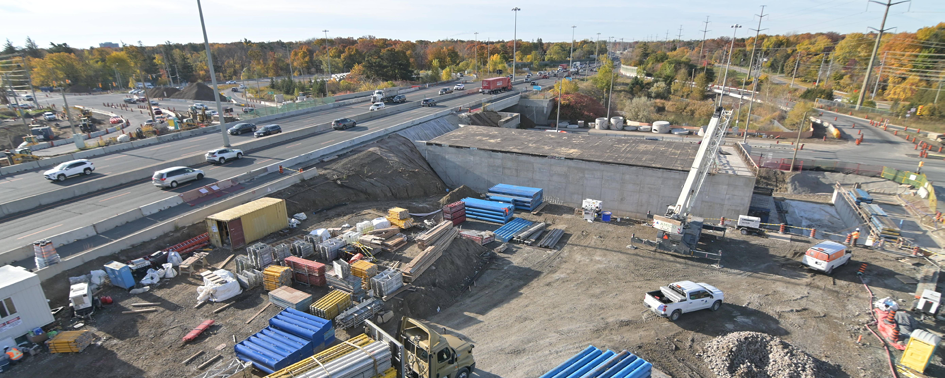Senior Project Manager Kevin McNally
Transportation Structures Manager Amir Khalil
In the transportation industry, progress is propelled by innovation. Cities around the world are designing and constructing cutting-edge transit solutions focused on safety, sustainability and responsiveness to the communities they serve. Metrolinx’s Hurontario Light Rail Transit (LRT) project recently renamed Hazel McCallion Line, in Ontario, Canada has set a new standard in rail infrastructure with its groundbreaking use of a push box system. This modern approach introduces a unique solution for the construction of transit systems and increases the efficiency of the $4.6 billion LRT project.
Once in service, Metrolinx’s Hazel McCallion Line will span 18 kilometers and offer communities an environmentally friendly, cutting-edge and reliable mode of transportation. To meet the needs of an expanding region, the transit system will include 19 stops, traverse two urban growth centers and will link with other prominent transit networks.
In October 2022, a new underpass was installed at Hurontario Street and Queen Elizabeth Way (QEW). The QEW push box will serve as a permanent underpass for northbound traffic, creating room for the Hazel McCallion Line tracks within the current northbound lanes and maintaining southbound Hurontario traffic flow.
The location posed significant constructability challenges due to its proximity to the existing structure, the traffic volume on the QEW, and possible remaining foundations of the old Hurontario structure and a large water main in the vicinity of the new structure.
Innovation
After reviewing and evaluating several options, the project team proposed an innovative approach to minimize impacts on roadway commuters along the QEW. The approach would also significantly reduce the construction duration on the highway and the amount of traffic staging required to construct the new structure. Working with Italy-based Petrucco and Metrolinx, the team elected the push box system, which is used for underpass construction and pushes a prefabricated box into the soil using high-capacity jacks. The new passageway was installed under an active highway using the box-jacking system which, due to the limited clearance required all lanes of the highway to be detoured via the on/off ramps, excavated and then reinstated. The team was able to finish the operation within the 55-hour timeframe specified by the Ministry of Transportation of Ontario (MTO).
Outcomes + Transferability
The design and construction methodology involved careful planning and coordination to mitigate the challenges and risks associated with a concrete push box option, to eliminate excess excavation due to the proximity to the existing structure and tight timeline for installation, and to minimize impacts on highway operations. Working alongside the push box jacking specialists Petrucco and Metrolinx, our team was able to reduce the construction time and design a push box that could be pushed at the required rate to meet the time constraint, would fit within the limited space available and was compliant with all codes and standards. The jacked underpass is a single segment with a total length of 54m.
The success of the Push Box system in the Hurontario LRT project opens the door for its adoption in future rail infrastructure, roadway and other infrastructure projects and showcases how technological innovation can address challenges in all infrastructure. As cities continue to invest in sustainable and efficient public transportation, innovative solutions like the push box system can play a crucial role in reducing the impacts of construction on existing infrastructure and enabling the efficient construction of new infrastructure.

